The Toyota Prius was the world’s first mass-produced petrol-electric hybrid vehicle. Its domestic launch in late 1997 marked the culmination of a concerted, five-year effort by Toyota Motor Corporation to develop and bring to market a practical, low-emission family vehicle.
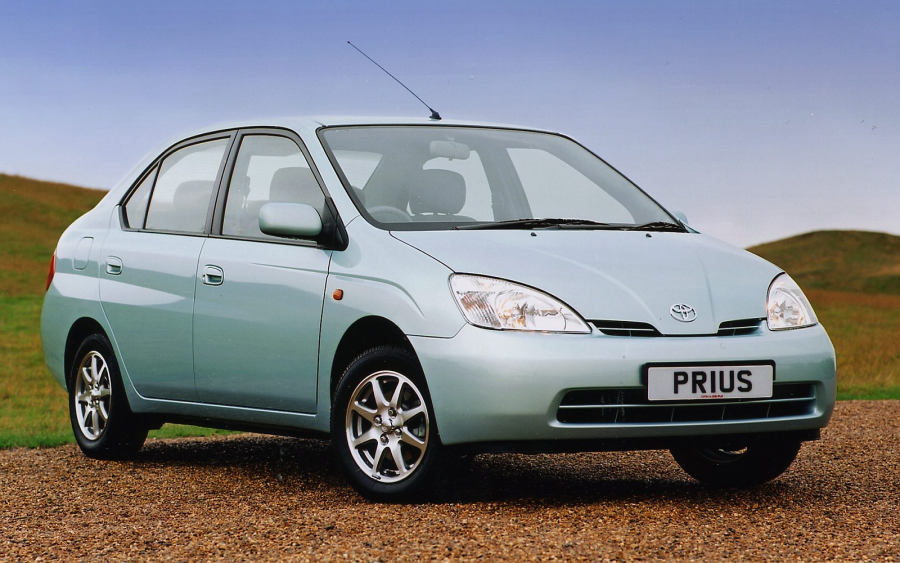
Contrary to popular opinion, Toyota did not create the hybrid vehicle concept. Vehicles with both an internal combustion engine and electric motor have existed as far back as 1898. But Toyota was the first manufacturer to overcome the numerous technical and engineering issues necessary to bring this powertrain into mass production. Primary among these was the need to increase the longevity of the high-voltage battery to match that of the rest of the car’s components.

At the heart of the new Prius (XW10 chassis) was the revolutionary Toyota Hybrid System, an integrated package whose mechanical components could still fit within a regular-size engine bay.
The system was fronted by a four-cylinder 1.5-litre NZ-series engine running a simulated Atkinson combustion cycle for optimal fuel-efficiency. It was allied to a compact and high-torque electric drive motor, and a separate generator. The final component was a powerful nickel-metal hydride battery pack hidden behind the back seats.
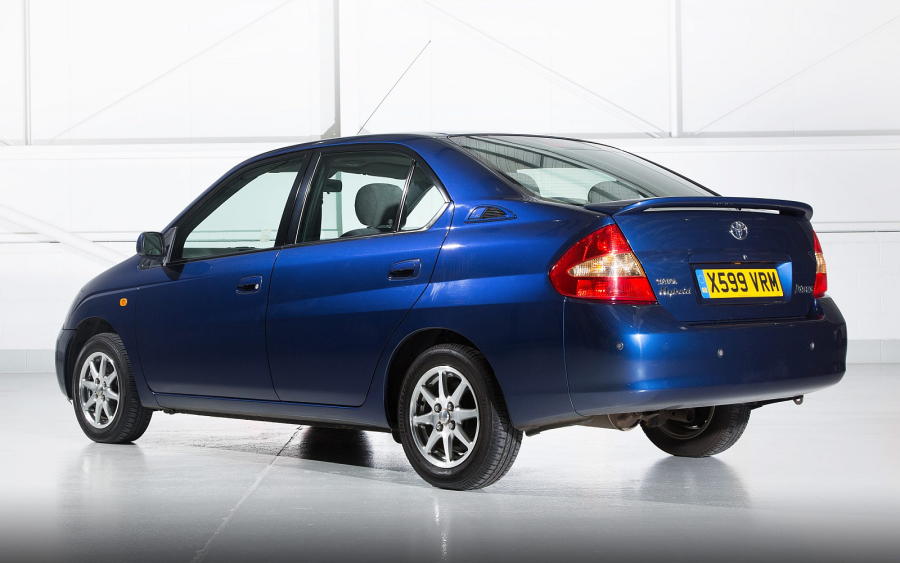
Interestingly, the principles and basic architecture of the first-generation Toyota Prius were so carefully and thoroughly developed from the outset that they have been applied across every hybrid model produced by Toyota Motor Corporation ever since.
The Toyota Prius was also the first manifestation of an important new platform that would go on to provide the foundation of forthcoming models such as the Corolla, Celica, RAV4 and second-generation Prius. Little wonder that the name Prius (Latin for ‘to go before’) was so appropriate for this breakthrough vehicle.
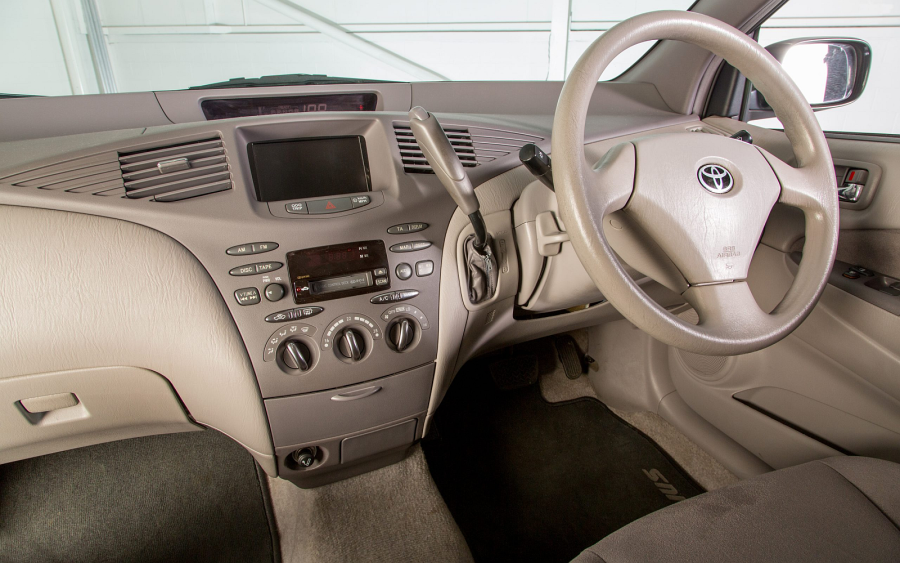
In terms of design, Toyota wrapped this world-leading environmental technology in a relatively traditional cab-forward shape and high-strength steel body structure. Penned by Toyota’s Calty Design centre in California, USA, it was uniquely sized between a supermini and a small family car, and had a low drag coefficient value of Cd 0.29.
Sales in Japan were extremely strong from the outset, buoyed by Prius winning Japan’s Car of the Year award for 1998. By May 2000 more than 40,000 units had been sold and production capacity was increased to 3,000 a month in anticipation of its arrival in refreshed form (XW11 chassis) in export markets.
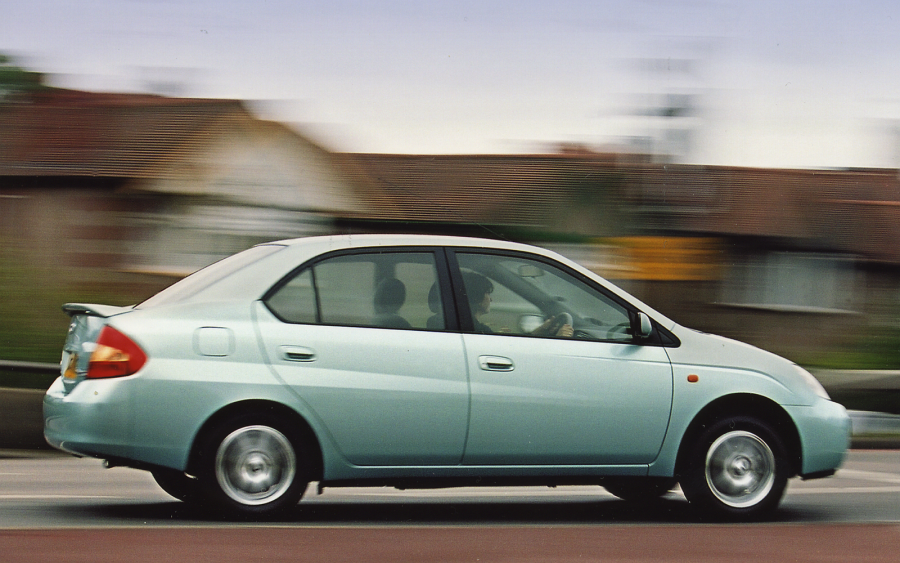
Working together, the Toyota Hybrid System allowed a theoretical driving range of 560 miles. It propelled Prius to 62mph in 13.4 seconds and on to a maximum speed of 99mph. The combined fuel economy was 57.6mpg and the powerplant produced just 114g/km of CO2. Compared with the top 10 best-selling saloons of that time, Prius was quantifiably cleaner and more fuel-efficient in almost every important category.
The Toyota Prius was launched in the UK on 17 October 2000. Although well received in Japan, it was thought that British consumers might not be so immediately convinced. So Toyota GB allayed any possible concerns about battery longevity or the ongoing reliability of this new hybrid technology by introducing Europe’s first five-year mechanical warranty.
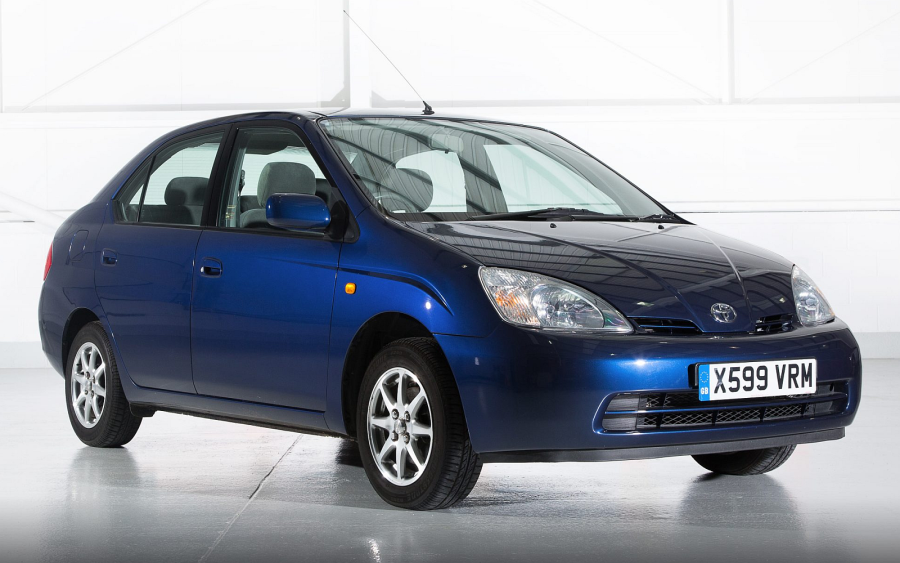
In addition, a private leasing scheme called Prius One was introduced to protect buyers from any residual value risk, and Toyota committed itself to handling the recycling at the end of the car’s useful life. Toyota already had the cleanest car manufacturing process in the world; now through the cycle of sales, service, daily use and scrappage, Prius set a path for the future of the automobile.
After more than 123,000 units had been sold worldwide, production of the first-generation Prius ended in August 2003. It had been the world’s most successful hybrid vehicle; but more than that, it had conclusively proved that family cars need not be powered by petrol or diesel alone.
Second-generation Toyota Prius
Building on this foundation, the next-generation Prius (XW20 chassis) was totally redesigned to harness Toyota’s continuing efforts in developing hybrid technology. Launched in the UK on 2 January 2004 with 530 new patents to its name, this advanced successor set benchmarks at both ends of the performance spectrum, being faster and more powerful yet cleaner and more economical than ever before.
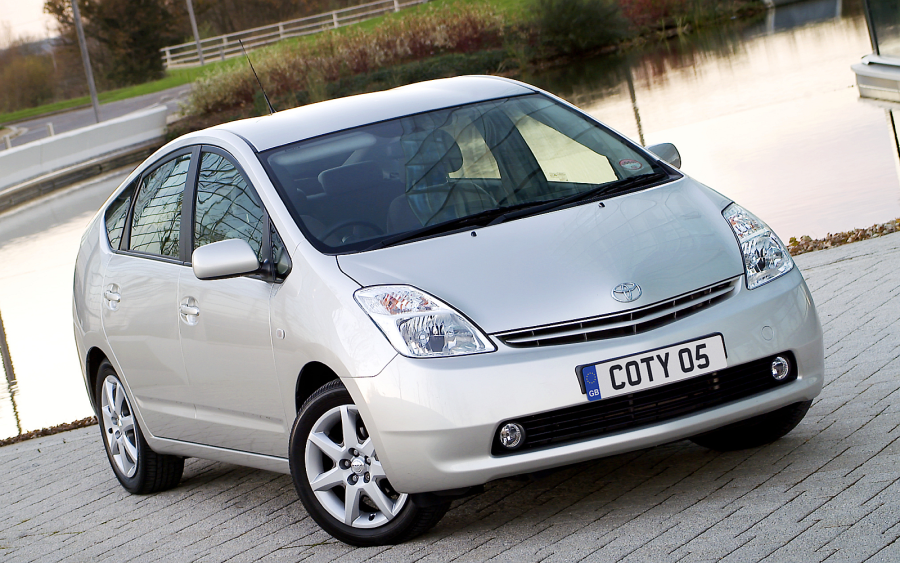
It was bigger than the outgoing car – now sized between Corolla and Camry – and had adopted a distinctive five-door ‘Kammback’ design that helped it scythe through the atmosphere with a drag coefficient figure of just Cd 0.26. Beneath that svelte exterior was a lightweight but tremendously strong bodyshell – its five-star Euro NCAP crash test result equalled the highest ever score in its segment.

The new Toyota Prius also introduced the second-generation hybrid drivetrain, now known as Hybrid Synergy Drive (HSD). The purpose of this system was to redress the balance between the petrol and electric motors. Instead of relying on the petrol engine to produce peak performance, with the electric motor as an ancillary, HSD increased the range and usage of the electric motor to focus on stronger performance.

So while the award-winning 1.5-litre NZ-series Atkinson cycle engine was carried over and had been tuned to offer eight per cent more power, the synchronous AC electric motor was uprated by a huge 50% to offer more power than the one-litre engine in the Toyota Aygo. Indeed, it now offered more torque from nought to 1,200rpm than a contemporary V6 diesel. Charge for this motor came from an improved battery pack that had fewer cells and less weight but a greater output density.

Many innovations were put in place to improve fuel economy. These included a new stop-start system to improve urban emissions, an EV driving mode for exclusive use of the electric motor to power the vehicle for up to 1.25 miles, and a world-first electric air conditioning system that could still control the climate when the engine was turned off.
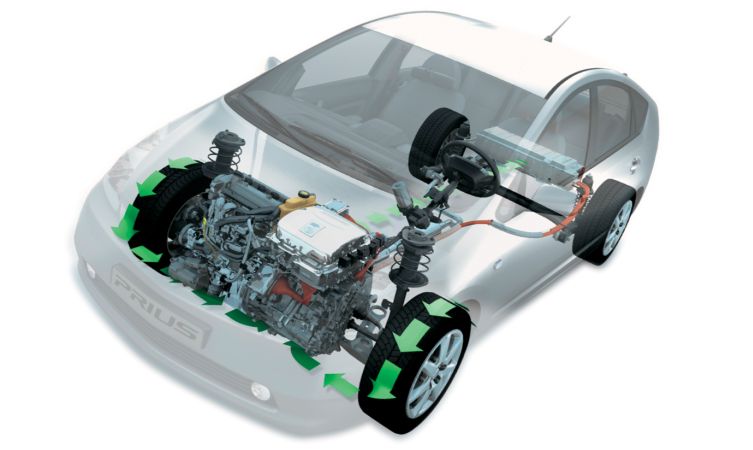
The result of these advances was a second-generation car with 15% improved fuel consumption – now a combined figure of 65.7mpg – and a 0-62mph time of 10.9 seconds on its way to a 106mph top speed. CO2 emissions had also tumbled to 104g/km.
With much greater demands placed on the electrical side of the drivetrain, Toyota recognised the importance of making similar improvements in the backward flow of charge to the battery. So it devised a regenerative system that captured the kinetic energy normally wasted through heat during brake application. Each time the brake pedal was pressed, the electric motor reversed its role and became a generator feeding electrical energy back into the battery.
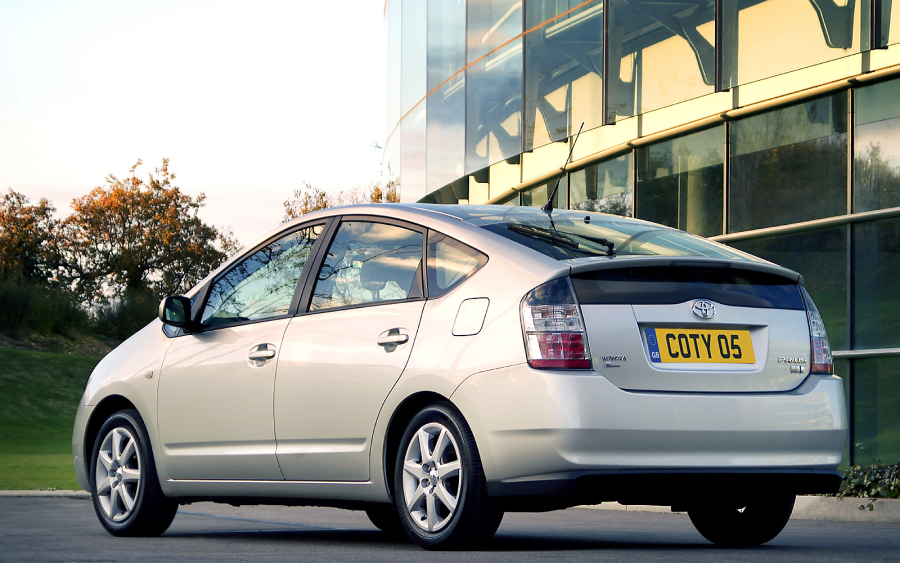
Before the end of 2004, the second-generation Prius had already surpassed the total sales of its predecessor. A quarter of a million models had been sold throughout the world, and with demand growing it was decided that production capacity should be increased to 180,000 units per year.
By the end of April 2006 total sales had exceeded 500,000 and acceptance of hybrid was further boosted by news that Prius had topped JD Power’s customer satisfaction surveys in the UK, France and Germany.
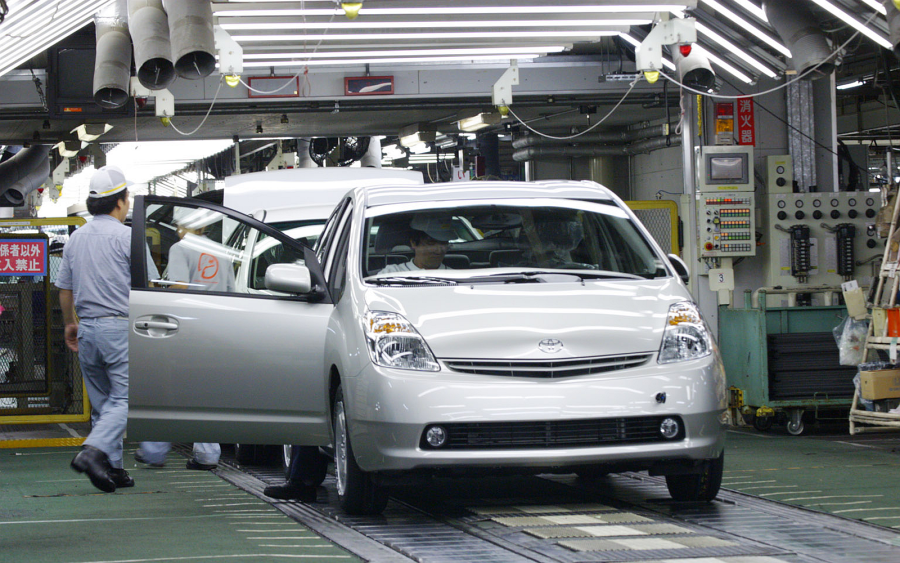
The all-new third-generation Prius was unveiled in January 2009 at the North American International Auto Show. But that wasn’t the end of the road for the second-generation model; it continued in production for the Chinese market until the end of 2011, by which time total Prius sales had climbed to a staggering 1,192,000 units.
Third-generation Toyota Prius
Predictably, the next Prius (XW30 chassis) took the benefits of Toyota’s world-leading hybrid technology to an even higher plane. Proclaimed as the most advanced mainstream car on the market, new Prius promised better fuel economy and performance as well as reduced lifecycle emissions from manufacturing through to ultimate disposal.
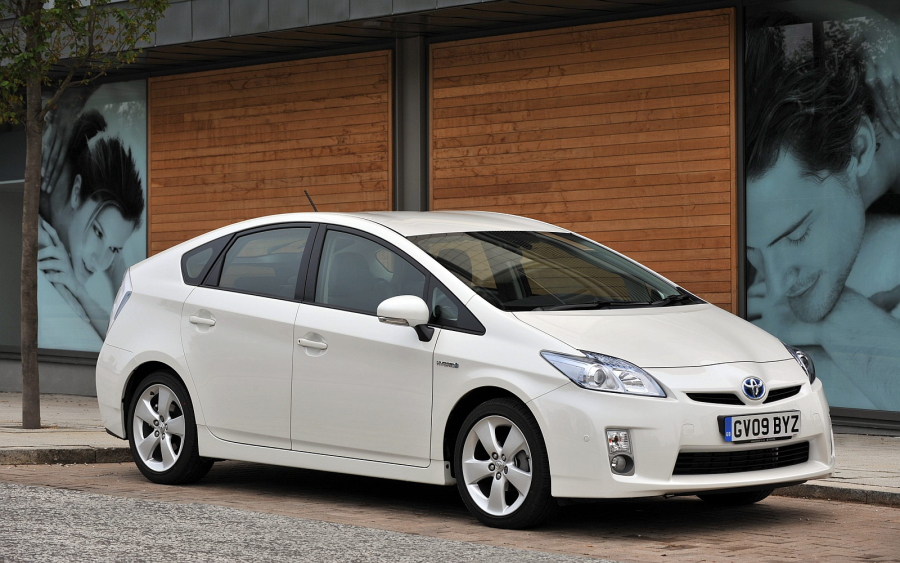
On sale in the UK from August 2009, it set new reference points for hybrid vehicles with a system output of 134bhp (a 22% increase), combined cycle fuel economy of 72.4mpg (a 10% increase) and CO2 emissions reduced to just 89g/km (a 14% decrease).
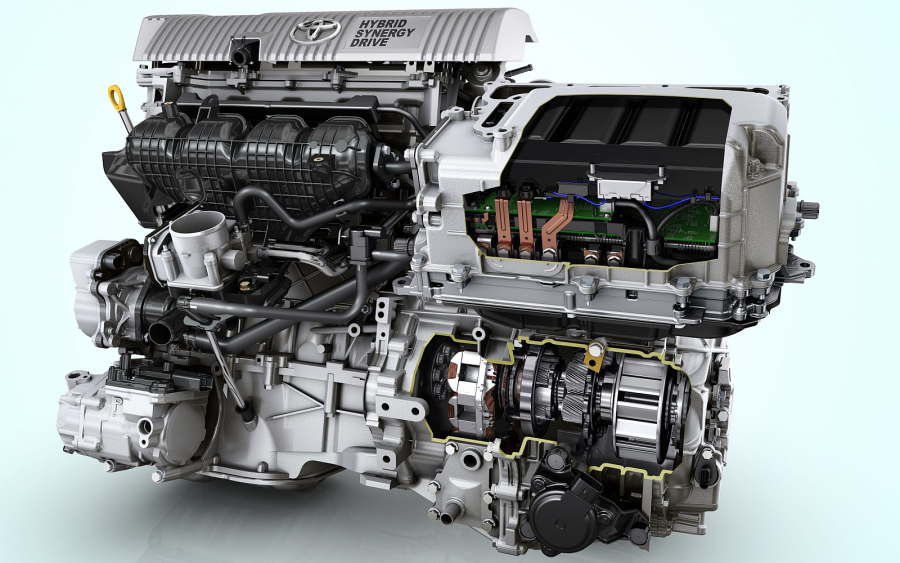
All this was achieved through seemingly counterproductive methods – a larger 1.8-litre Atkinson cycle petrol engine and a Hybrid Synergy Drive system that was significantly smaller and lighter than before. In fact, 90% of the hybrid drive components were new.
The installation of a larger capacity ZR-series engine allowed Prius to deliver more useful pulling power at lower revolutions – 300rpm less at a cruising speed of 75mph – for improved economy. Meanwhile, a new exhaust gas recirculation function kept operating temperatures under control so that the engine would be less likely to need wasteful fuel enrichment to keep the catalytic converters cool.
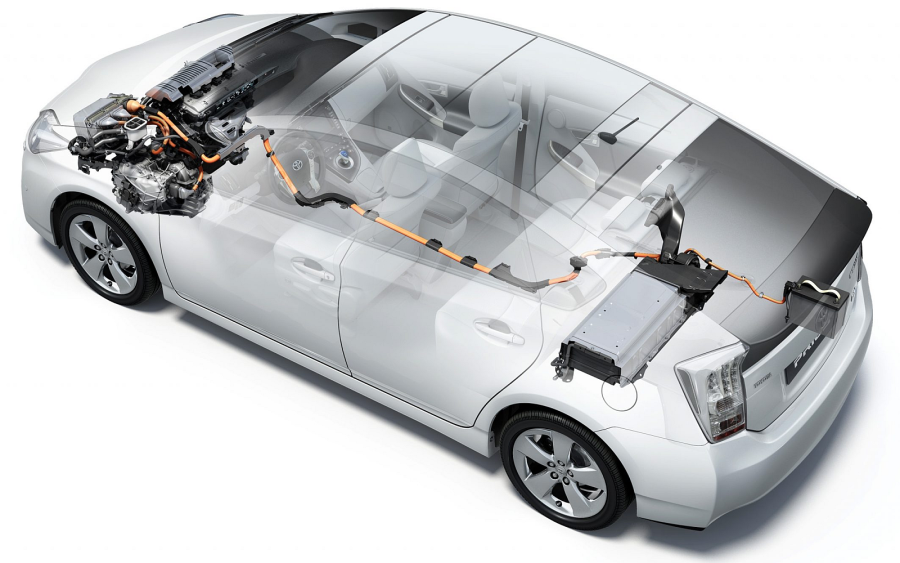
Extensive use of high-tensile metal kept weight in check so the powertrain could better flex its muscles. This was perhaps best evidenced by three on-demand driving modes that allowed the driver make the most of different conditions. ‘EV’ mode would run the car on electric power alone at speeds of up to 31mph for up to 1.2 miles; ‘Eco’ mode reduced the effect of aggressive throttle inputs and adjusted the air conditioning to improve fuel economy. Finally, ‘Power’ mode augmented throttle inputs by up to 50% to increase performance.
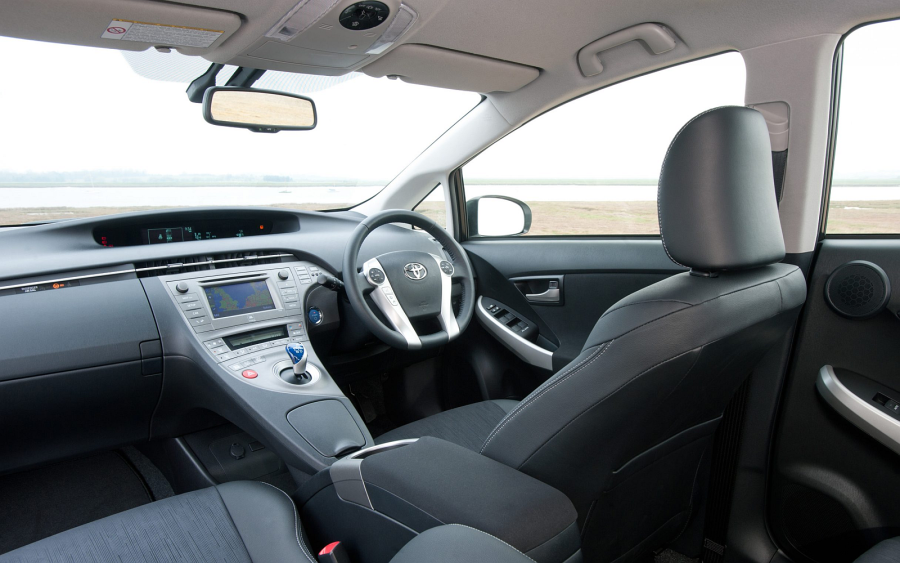
The wedge-shape silhouette of Prius had become a defining characteristic of Toyota’s world-leading hybrid, so the sweeping monobox look was retained and augmented with sharper details honed through more wind tunnel testing than any Toyota preceding it. The guiding principle of ‘minimum outside, maximum outside’ ensured more space for passengers within physical proportions that were almost exactly the same as before.
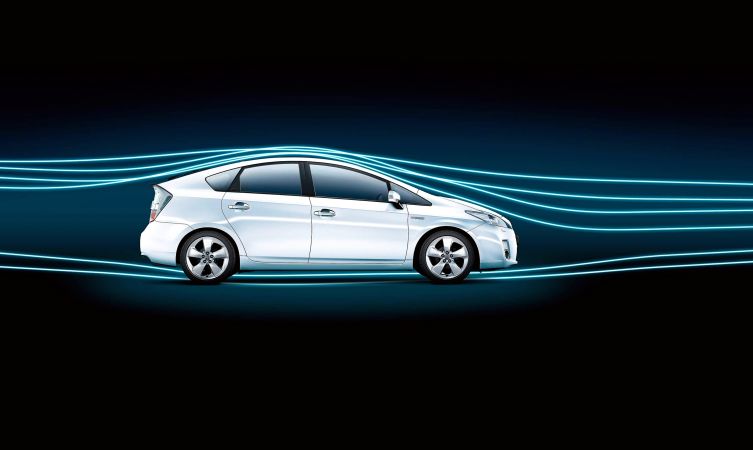
Similarly, the car rode on an all-new platform designed to deliver sharper, more involving handling and greater stability, with particular attention being paid to the flow of air beneath the car. This not only supported these physical qualities but made further improvements to fuel economy through a drag coefficiency figure of just Cd 0.25, the lowest of any mass-produced car in the world.

Numerous high-tech innovations and active safety features were introduced to the class through Prius. This included a solar-powered ventilation system that activated an air circulation fan to reduce the build-up of heat inside the car while parked and reduce the need for air conditioning.
Meanwhile, electricity consumption was reduced by up to 30% through the widespread adoption of LED lights. Toyota’s determination to reduce emissions and promote sustainability was also seen in the third-generation Prius being the first car to be constructed using injection moulded eco-plastics derived from plant matter.
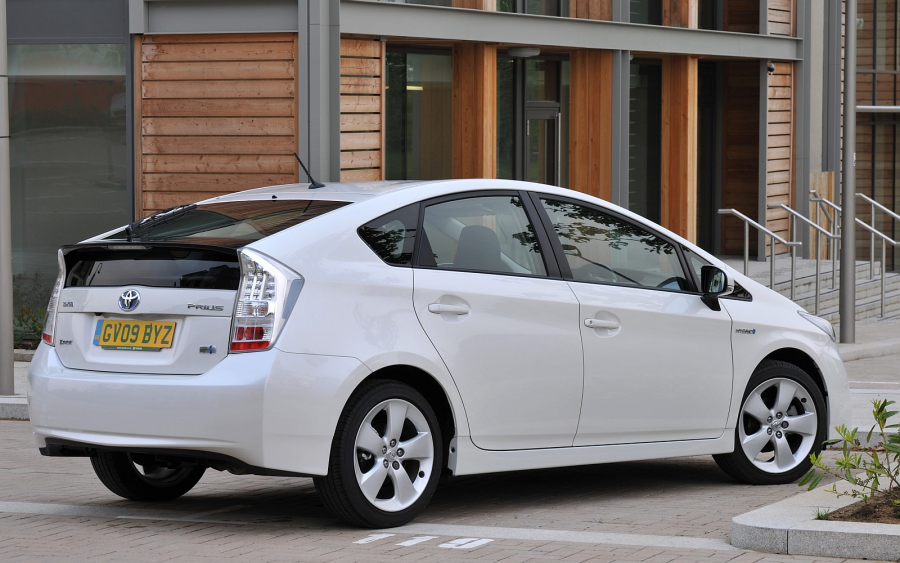
Formal acknowledgement of the advancements Toyota had made with the third-generation Prius came in the form of it being awarded Japan Car of the Year in 2009 and being shortlisted for 2010 World Car of the Year. Frequently Japan’s best-selling car, sales success was echoed in Britain where over 2,000 advance orders were received for the third-generation Prius before its UK launch.
From the arrival of the Toyota Prius in Europe in 2000, it took eight years to reach 100,000 sales but only a further two years to achieve 200,000 sales. By the end of September 2010, accumulated Prius sales across the world had exceeded 2,000,000 units. That upward trajectory continued, and by the end of September 2014 the figure stood at an incredible 3,360,400 units.
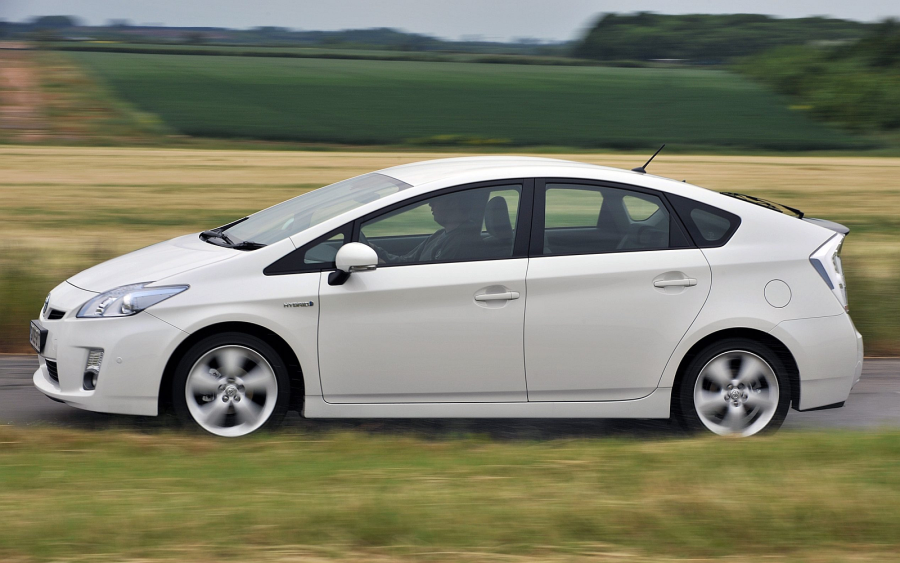
As if the launch of a world-class third-generation car was not enough, exciting new chapters of Prius history opened a couple of years later, increasing the Prius family line-up to three models. These two new models benefited from more powerful lithium-ion battery packs – a first for Toyota – but for two different reasons.
The new Prius Plug-in (below left) could be charged from an external power source as well as its hybrid drive system. It was developed to appeal to environmentally conscious early adopters that wanted the benefits of electric motoring but without the range anxiety normally associated with this type of vehicle. The high-voltage battery pack in this vehicle therefore offered an increased range of 14 miles on electric power alone.
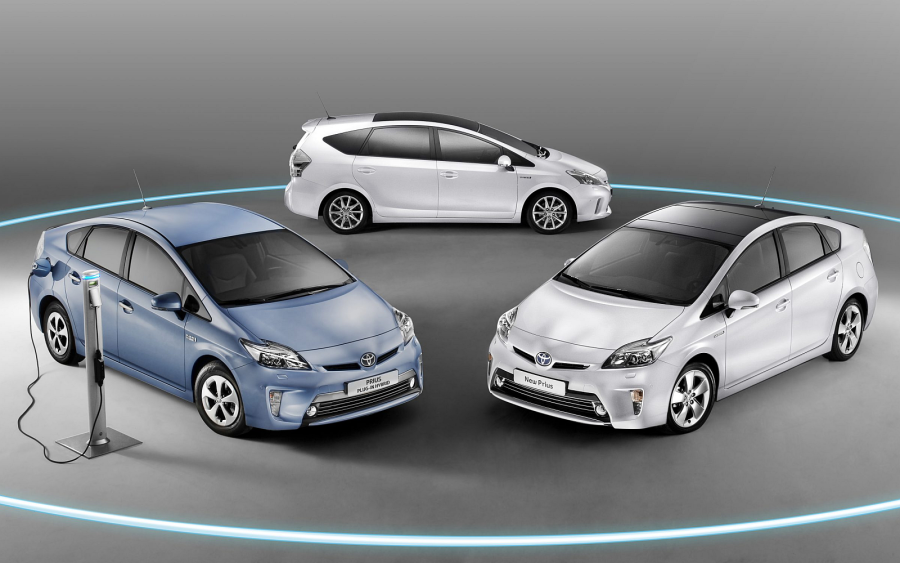
Meanwhile, the new Prius+ (above centre) targeted growing European families that wanted to match the environmental qualities of the regular Prius but with additional space and flexibility. In this instance, the more powerful battery pack helped to overcome the additional weight of this seven-seat vehicle and deliver performance equivalent to that of the Prius.
Fourth-generation Prius
With each successive generation, the Prius had delivered an average reduction of 10% in CO2 emissions, so the challenge was to continue – and hopefully accelerate – that rate of improvement in the fourth-generation car.

When the new Prius (XW40 chassis) made its world debut at the 2015 Frankfurt Motor Show, it certainly looked like it had made a huge leap forward in design. But the advancement was even more pronounced under the skin. Its lighter, more compact and more efficient next-generation full hybrid powertrain was housed within the first use of the Toyota New Global Architecture (TNGA) platform, which promised improved dynamic performance through a lower centre of gravity and a stronger structure.
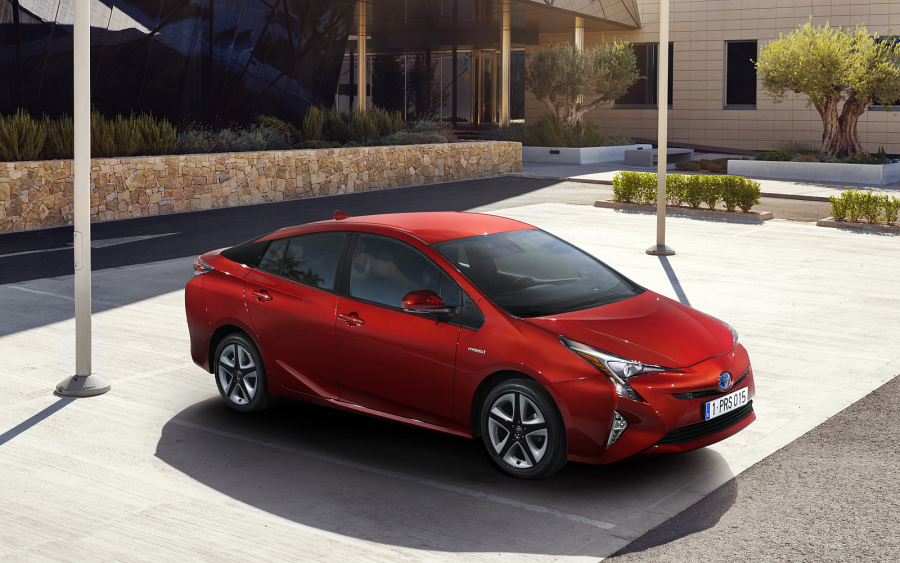
First customer deliveries for the European market commenced in March 2016, where official homologation figures revealed combined cycle fuel economy of 94.1mph and emissions falling to an historic low of 70g/km. The fourth-generation Prius truly represented the culmination of 15 years of constant hybrid development, and reaffirmed the model’s position as Toyota’s technological ambassador.
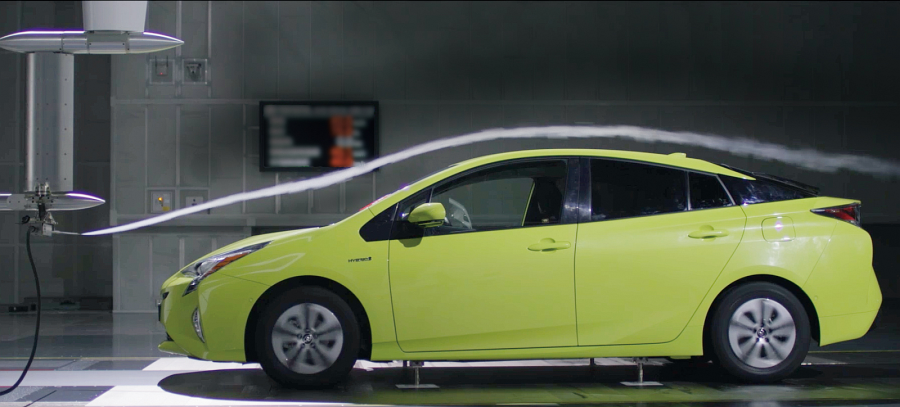
The car’s low-slung stance – made possible by the TNGA platform – and distinctive silhouette was the result of a youthful design team, which injected the model’s traditional ethical profile with a healthy dose of ‘ego’. Slightly longer and wider than the outgoing Prius, the new car was 20mm lower and its cab-forward layout was emphasised by placing the peak of the roof 170mm closer to the front of the car. Careful aerodynamic treatment, especially around the sides and rear, resulted in a world-class 0.24 coefficient of drag. But perhaps the biggest indicator of the model’s sports car-like centre of gravity and athletic quality was the fact that the hip point of the driver was now 59mm lower than before.
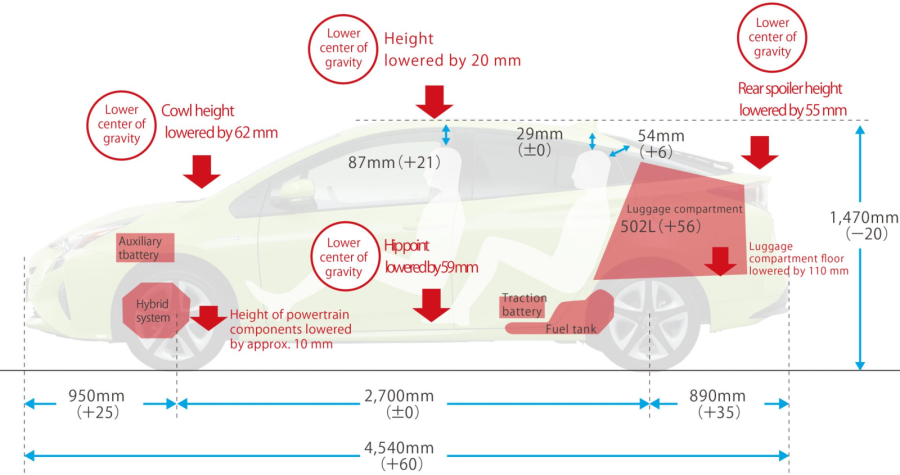
The new car’s hybrid system was based around a 1.8-litre VVT-i Atkinson cycle petrol engine. While those basic facts were identical to the outgoing Prius, the unit had been completely re-engineered to deliver significantly better fuel economy. The gas flow, combustion, cooling and knock control were all improved, while a heat recovery system was employed to make more effective use of exhaust gas recirculation in warming engine coolant.

As a result, the new engine offered 40% thermal efficiency, the highest level in the world for a mass-produced petrol engine. This surpassed the 37% efficiency of the 1.5-litre Prius engine and the 38.5% of the 1.8-litre engine in the third-generation Prius.

In terms of output, the combined efforts of the 97bhp petrol engine and 71bhp electric motor offered a total output of 121bhp, with the software programmed to draw more than ever before from the 1.31kWh nickel-metal hydride battery pack – relocated beneath the rear seat to maximise boot space. The linear relationship between speed and engine revs were more closely aligned to give acceleration a more natural feel (and sound), which improved usability and allowed the car to offer a 725kg towing capacity for the first time.
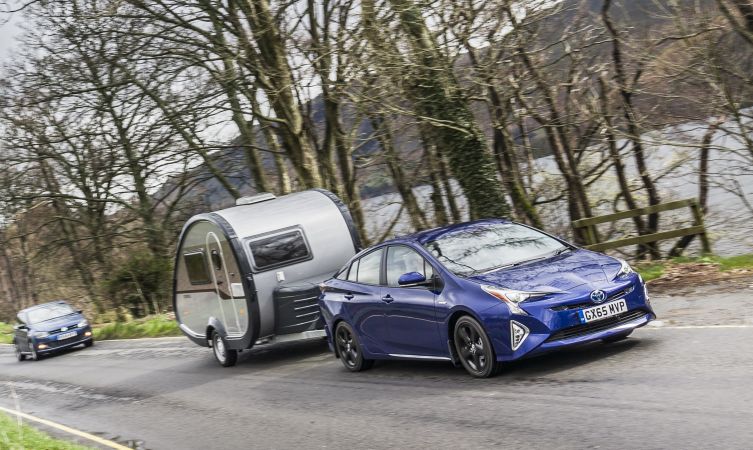
Soon after going on sale, the safety credentials of the new Prius were confirmed with a top five-star NCAP crash safety rating. This was the third successive five-star outcome, with the two previous generations having scored just as highly in their contemporary tests.
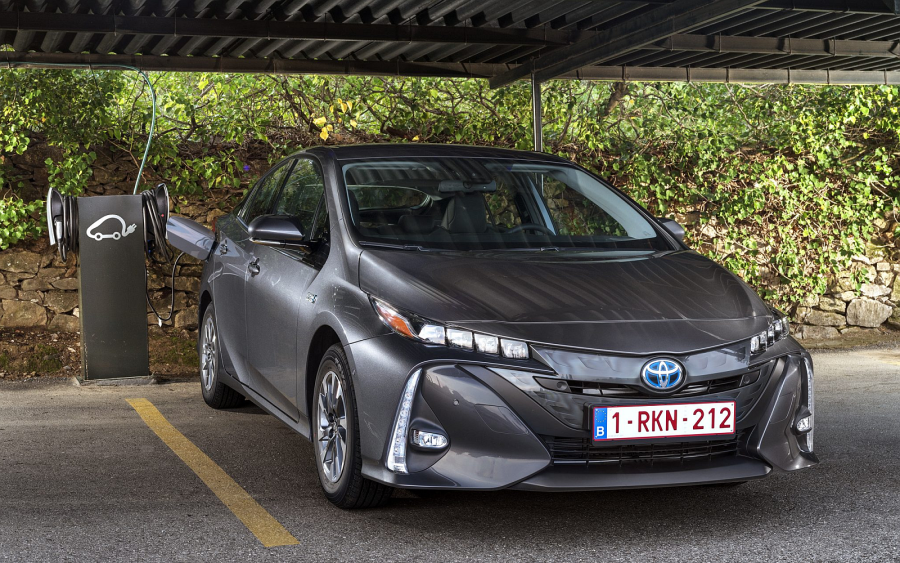
A year later, the all-new Prius Plug-in was revealed at the 2016 New York International Auto Show. As well as some minor styling differences to differentiate it from the regular Prius, this model featured an 8.8kWh lithium-ion battery pack, which allowed drivers to enjoy the benefits of EV running for distances beyond 30 miles and at speeds of up to 84mph. But its abilities were not purely battery-related. The model was equipped with a new dual motor drive system that allowed the generator within the transaxle to double-up as a second electric motor, which in turn increased EV power by around 83%.
With official combined economy of 202mpg and just 32g/km emissions, the new Prius Plug-in offered more (or less!) than any other plug-in of the time. The first deliveries started in the UK in March 2017.
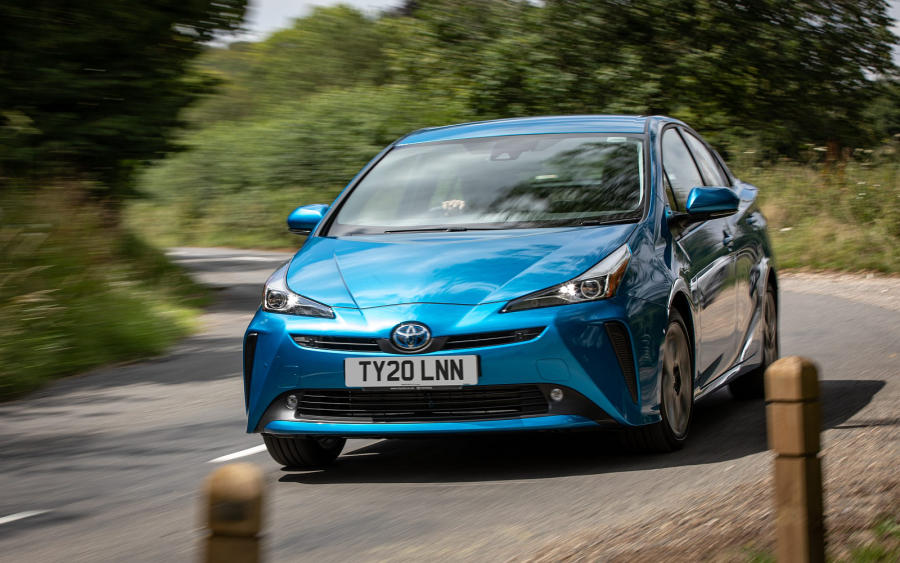
A mid-cycle refresh was applied to the Prius in 2019, applying cleaner, more engaging lines, revised front- and rear-end treatments, new light units, wheel designs and colour choices. At the same time, a new version equipped with intelligent, electric all-wheel drive was launched.
Rather than adopting a mechanical link between the front and rear axles, the rear wheels of this Hybrid AWD-i model were independently powered by an additional electric motor. The system was not designed to run all the time but engineered to engage automatically from zero to 7.0mph, and then when sensors detected low-grip conditions at speeds from 7.0 to 44mph. This model used a new nickel-metal hydride battery designed for excellent cold weather performance.
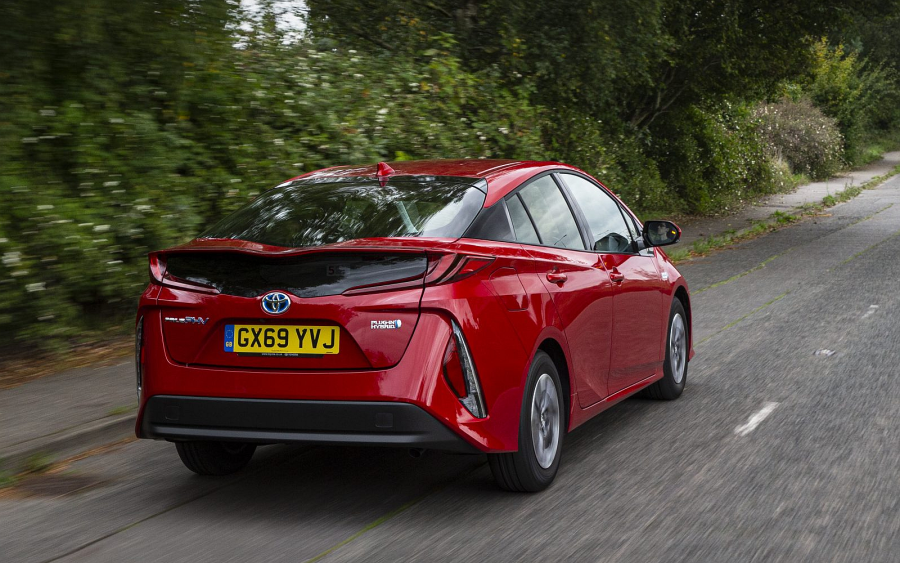
By the time the fourth-generation Prius was taken off sale in the UK in 2021, more than 15 million hybrid models had been sold worldwide, of which three million were in Europe. In the UK, almost 105,000 examples of the Prius, Prius Plug-in and Prius+ were sold since the model’s introduction in 2000.
So well-thought-out was the original Prius concept and so adaptable was its hybrid technology that it provided the foundation for Toyota’s multi-powertrain electrification strategy, which now includes battery electric vehicles, plug-in hybrid electric vehicles and fuel cell electric vehicles.
Fifth-generation Prius
The all-new fifth-generation Prius was unveiled in Japan at the end of 2022 and then launched in the domestic market in January 2023. The new car takes the distinctive monoform silhouette of its predecessors to new levels of visual desirability, while underneath it is built around Toyota’s second-generation TNGA platform and powered by Toyota’s fifth-generation hybrid system. As before, both hybrid and plug-in hybrid versions are available.
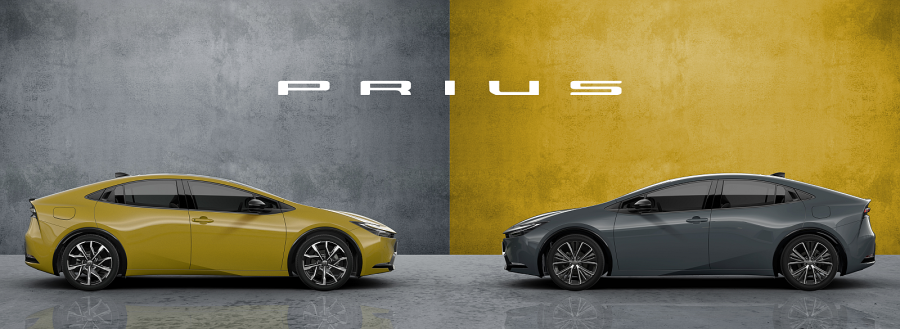
Technical highlights of this next-generation Prius are being incorporated into other models, such as the 2023 Toyota Corolla.

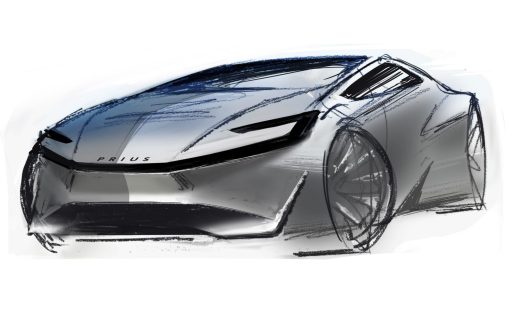
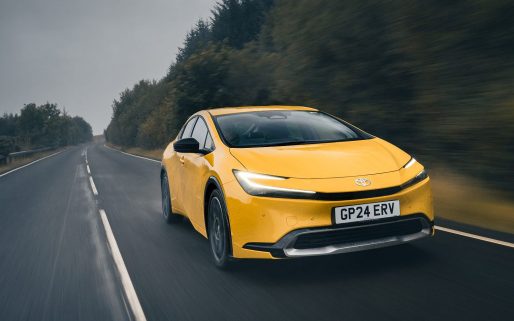
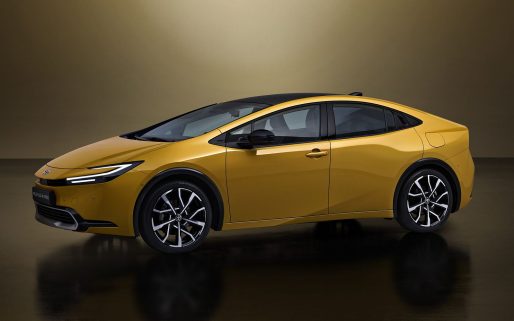

I run a 2002 prius
Purchased as salvage but struggling to find parts to keep it going
Anyone else running a 1st generation prius?
Martin
I love my 2002 Prius
Hybrid cars only